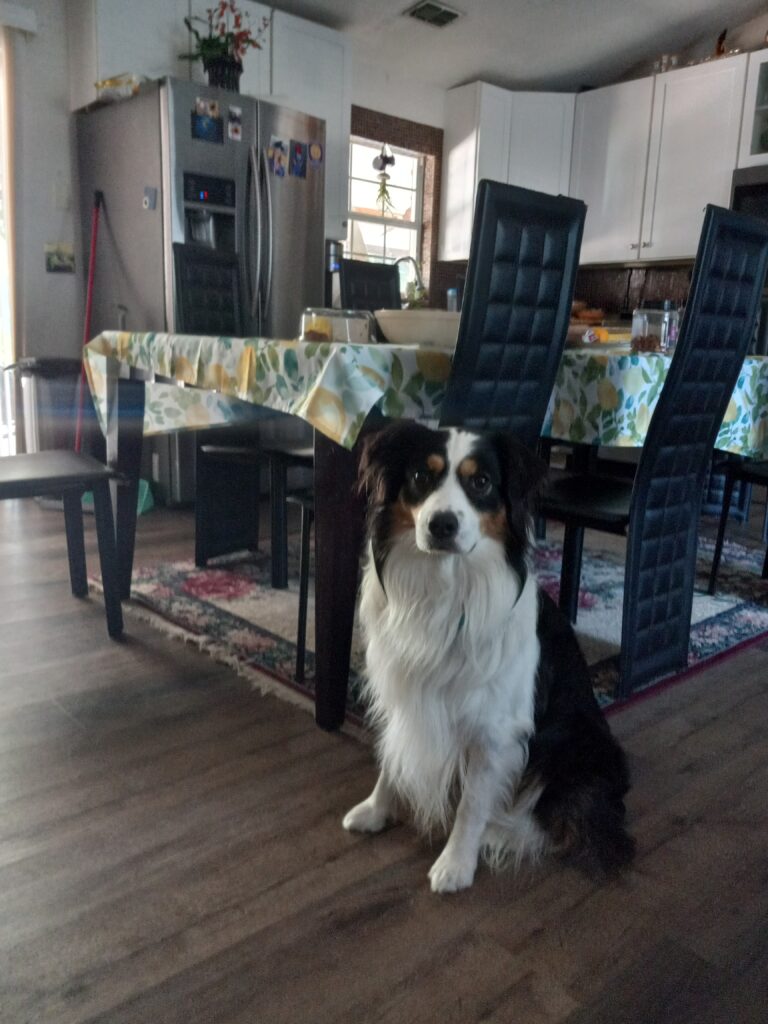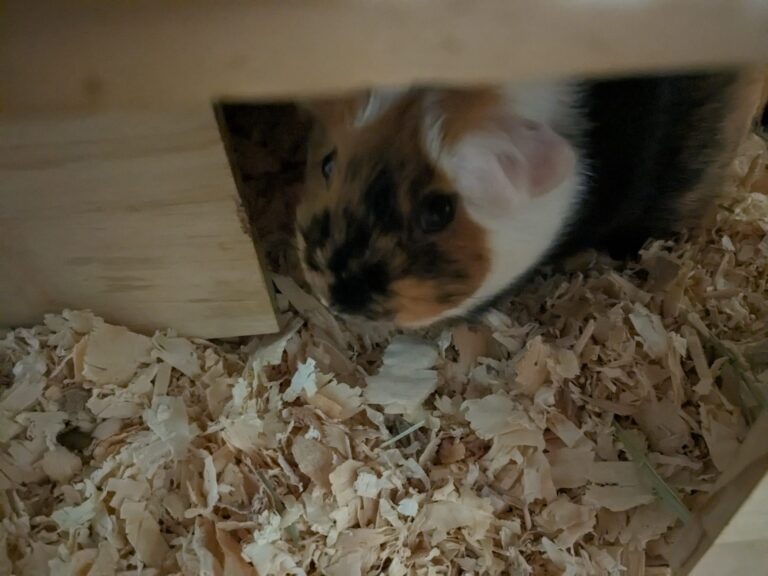Pet-Proofing Your Home: How to Keep Your Furry Friend Safe
Are you a proud pet parent who has just welcomed a new furry family member into your home? While the love and companionship that pets bring into our lives is immeasurable, it’s important to make sure that they are safe in their surroundings. From poisonous plants to electrical cords, there are many hazards lurking in our homes that can endanger our four-legged friends.
In this blog post, we’ll explore some key tips on how to pet-proof your home and keep your beloved animal companion out of harm’s way. So get ready to learn about the essential do’s and don’ts of pet-proofing – your little buddy will thank you!
Introduction: Reasons to Pet-Proof Your Home
As a pet owner, it’s your responsibility to keep your furry friend safe. That includes making sure your home is pet-proofed.
Here are some reasons to pet-proof your home:
1] To prevent accidents. Pet-proofing your home will help to prevent accidents from happening. Things like electrical cords and small items that can be swallowed can pose a serious threat to your pet’s health.
2] To keep them from getting lost. If you have an indoor pet, pet-proofing your home will help to keep them safe and prevent them from getting lost if they manage to get out of the house.
3] To protect your belongings. Pets can be curious creatures, and that can sometimes lead to them damaging your belongings. By pet-proofing your home, you can help to protect your possessions from being damaged or destroyed by your furry friend.
4] To create a safe haven for them during storms or other disasters. If there is a severe storm or another disaster, you’ll want to make sure your pet has a safe place to go. Pet-proofing your home will help to create a safe space for them in the event of an emergency.
5] Because it’s the responsible thing to do as a pet owner! By taking the time to pet-proof your home, you’re showing that you’re responsible and care about keeping your furry friend safe .
These are just some of the reasons why it’s important to pet-proof your home. Doing so will help to keep your pet safe, protect your belongings, and create a safe haven in case of an emergency.
Identifying Potential Hazards in Your Home
As a pet owner, it’s important to be aware of potential hazards in your home that could harm your furry friend.
Some common hazards include:
1] Medications and chemicals: Be sure to keep all medications and chemicals out of reach of your pet. This includes items such as cleaning products, bleach, detergents, and pest control products. Also be sure to store these items in their original containers with the labels intact so you can easily identify them.
2] Plants: Some common household plants can be poisonous to pets if ingested. Some examples include aloe vera, caladiums, dieffenbachia, and lilies. If you have houseplants, be sure to research which ones are safe for pets and keep them out of reach.
3] Electrical cords: Pets can easily chew on electrical cords, which can lead to burns or electrocution. Be sure to keep all cords out of reach or covered up so they’re not accessible to your pet.
4] Small objects: Pets can choke on small objects such as coins, buttons, beads, etc. Be sure to keep any small objects out of reach or securely stored away so they don’t become a choking hazard.
5] Sharp objects: Sharp objects such as knives, scissors, needles, etc., can obviously cause injury if your pet comes into contact with them. Be sure to keep these items stored away safely and out of reach.
Creating a Pet Friendly Environment
If you share your home with a furry friend, it’s important to create a pet-friendly environment.
Here are some tips on how to keep your furry friend safe:
- Keep all cleaning products and chemicals out of reach. Store them in high cabinets or in a locked closet.
- Put trash cans in a cabinet or in a room that your pet can’t access.
- Keep all windows and doors closed and locked. Screened windows and doors should be secure so that your pet can’t push them open.
- Create a safe space for your pet. This could be a kennel, crate, or designated room where your pet can feel comfortable and safe.
- Block off any areas of your home that are dangerous for pets, such as the kitchen or laundry room. Use baby gates or close doors to prevent access.
- Inspect your home regularly for potential hazards, such as loose wires or small objects that your pet could choke on.
Training and Education
The first step to pet-proofing your home is to provide your furry friend with the proper training and education. There are a number of different ways to do this, but the most important thing is to be consistent in your approach.
One way to train your pet is through positive reinforcement. This means rewarding them when they display the desired behavior. For example, if you want them to stay off the couch, praise them and give them a treat when they do so.
Another method of training is through negative reinforcement. This involves using an unpleasant consequence to discourage undesirable behavior. For instance, if your pet jumps on the couch, you may spray them with water or say “no” in a firm voice.
Whatever method you choose, it’s important to be patient and consistent in your approach. With time and patience, you can successfully pet-proof your home and keep your furry friend safe.
Choosing the Right Materials and Products
There are a few key things to keep in mind when pet-proofing your home: safety, comfort, and durability. First and foremost, you’ll want to make sure that all materials and products you use are safe for your pet. This includes choosing non-toxic materials, avoiding small or sharp objects that could injure your pet, and making sure any products you use are properly labelled and stored out of reach.
You’ll also want to consider your pet’s comfort when choosing materials and products. For example, if you’re using a chemical cleaner, make sure it won’t irritate your pet’s skin or respiratory system. If you’re buying new furniture, look for items that are easy to clean and won’t harbour fleas or other pests. And if you’re considering a change to your flooring, keep in mind that some materials can be slippery for pets, making them more likely to fall or hurt themselves.
Think about durability when selecting materials and products for your home. Pets can be hard on furniture and flooring, so choose items that are built to last. Stain-resistant fabrics, scratch-resistant finishes, and tough flooring materials will all help protect your investment and keep your home looking its best for years to come.
Puppy Proofing Essentials
As a pet owner, it’s your responsibility to make sure your home is safe for your four-legged friend.
Here are some essential tips for puppy proofing your home:
1] Keep poisonous plants out of reach. Many common houseplants are toxic to dogs and can cause serious health problems if ingested. If you have houseplants, keep them out of reach of your puppy or train your pup to stay away from them.
2] Store dangerous chemicals safely. Cleaning products, detergents, and other household chemicals should be stored in a safe place where your puppy cannot reach them.
3] Prevent electrical shocks. Cover exposed electrical outlets and cords with childproof covers or tape them down so your pup can’t chew on them.
4] Keep small objects out of reach. coins, buttons, beads, and other small objects can pose a choking hazard for puppies. Keep them out of reach or put them away in a safe place where your pup can’t get to them.
5] Be careful with human food. Many foods that are safe for humans are dangerous for dogs, including chocolate, onions, garlic, grapes, and raisins. Keep these foods out of reach or don’t have them in the house at all if you have a puppy.
Creating a Safe Place for Your Pet

When it comes to pet-proofing your home, the first step is to create a safe place for your pet. This means identifying potential hazards and taking steps to mitigate them. For example, if you have a cat, you’ll want to make sure there are no exposed wires or small spaces that they could get stuck in. If you have a dog, you may want to consider using baby gates to keep them confined to certain areas of the home.
In addition to identifying potential hazards, it’s also important to create a routine for your pet. This will help them feel comfortable and secure in their environment. For example, you may want to establish regular feeding and walking times.
You may also want to create a designated space for your pet to sleep or relax in. By creating a routine and providing a safe space for your pet, you can help reduce their stress levels and keep them healthy and happy.
Common Sense Tips for Protecting Pets
When it comes to pets, there is no such thing as being too cautious.
Here are some common sense tips for protecting your furry friend:
1] Keep an eye on your pet at all times. When you can’t be there to supervise, put your pet in a safe, enclosed space.
2] Be aware of potential hazards in your home and keep your pet away from them. Common hazards include electrical cords, poisonous plants, and chemicals.
3] Keep your pet’s vaccinations up to date. This will help protect them from diseases that could make them sick or even kill them.
4] Spay or neuter your pet. This will help reduce the chances of them roaming or getting into fights with other animals.
5] Get to know your neighbors and their pets. This way you can be aware of any potential hazards in the area, and you may even find a new playmate for your pet!
Conclusion
As a pet owner, it is important to take steps to ensure your home remains a safe and secure environment for you and your furry friend. Setting up safety measures such as using baby gates or closing doors will help keep them out of dangerous areas, while regularly checking the condition of cords and sockets can reduce the risk of electrocution.
Additionally, introducing your pet to all the sounds and smells of their new home gradually can ease any anxieties that they may have regarding settling in. Following these tips will help you create an enjoyable space both for yourself – as well as your beloved pet!







